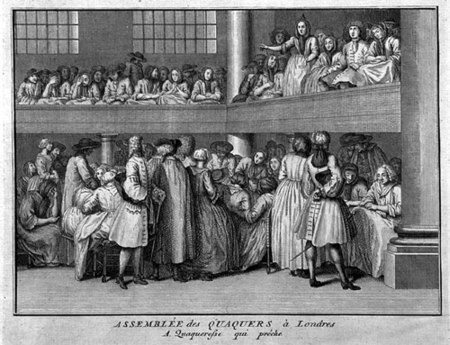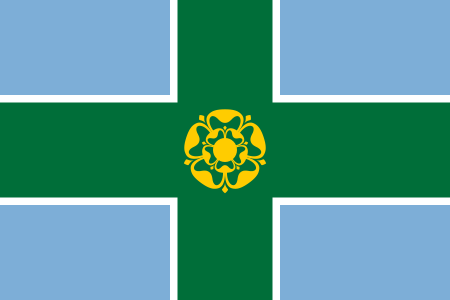Tar Heel
|
Read other articles:

Questa voce o sezione sugli argomenti seconda guerra mondiale e politici danesi non cita le fonti necessarie o quelle presenti sono insufficienti. Puoi migliorare questa voce aggiungendo citazioni da fonti attendibili secondo le linee guida sull'uso delle fonti. Segui i suggerimenti del progetto di riferimento. Henrik Kauffmann (a destra) insieme al Ministro degli Esteri giapponese Yoshizawa Kenkichi Henrik Kauffmann (Francoforte sul Meno, 26 agosto 1888 – Skodsborg, 5 giugno 1963) è sta…

Type of chair push back redirects here. For the song, see Push Back. This article needs additional citations for verification. Please help improve this article by adding citations to reliable sources. Unsourced material may be challenged and removed.Find sources: Recliner – news · newspapers · books · scholar · JSTOR (May 2012) (Learn how and when to remove this message) A recliner Recliner aboard a business jet A recliner is an armchair or sofa that recl…

River in France and Germany For the river in Switzerland, see Saar (Rhine). SaarSaar loop at MettlachLocationCountriesFrance and GermanyPhysical characteristicsSourceSarre Blanche • locationVosges mountains, Bas-Rhin • coordinates48°31′37″N 7°09′45″E / 48.52694°N 7.16250°E / 48.52694; 7.16250 (Sarre Blanche) • elevation±800 m (2,600 ft) 2nd sourceSarre Rouge • locationVosge…

莎拉·阿什頓-西里洛2023年8月,阿什頓-西里洛穿著軍服出生 (1977-07-09) 1977年7月9日(46歲) 美國佛羅里達州国籍 美國别名莎拉·阿什頓(Sarah Ashton)莎拉·西里洛(Sarah Cirillo)金髮女郎(Blonde)职业記者、活動家、政治活動家和候選人、軍醫活跃时期2020年—雇主內華達州共和黨候選人(2020年)《Political.tips》(2020年—)《LGBTQ國度》(2022年3月—2022年10月)烏克蘭媒體�…

此条目序言章节没有充分总结全文内容要点。 (2019年3月21日)请考虑扩充序言,清晰概述条目所有重點。请在条目的讨论页讨论此问题。 哈萨克斯坦總統哈薩克總統旗現任Қасым-Жомарт Кемелұлы Тоқаев卡瑟姆若马尔特·托卡耶夫自2019年3月20日在任任期7年首任努尔苏丹·纳扎尔巴耶夫设立1990年4月24日(哈薩克蘇維埃社會主義共和國總統) 哈萨克斯坦 哈萨克斯坦政府與�…

Hans Sarpei Hans Sarpei berlatih di Schalke 04, 2011.Informasi pribadiNama lengkap Hans Adu SarpeiTanggal lahir 28 Juni 1976 (umur 47)Tempat lahir Tema, GhanaTinggi 1,78 m (5 ft 10 in)Posisi bermain BekKarier junior0000–1996 Chorweiler1996–1997 Preußen Köln1997–1998 Winfriedia MülheimKarier senior*Tahun Tim Tampil (Gol)1998–2000 Fortuna Köln 44 (0)2000–2001 MSV Duisburg 20 (1)2001–2007 VfL Wolfsburg 139 (2)2001–2007 VfL Wolfsburg II 1 (0)2007–2010 Bayer Le…

This article is part of a series on thePolitics of Switzerland Constitution Human rights Federal Council Members (by seniority) Beat Jans Guy Parmelin Ignazio Cassis Viola Amherd (President) Karin Keller-Sutter (Vice President) Albert Rösti Élisabeth Baume-Schneider Federal Chancellor Viktor Rossi Federal administration Federal Assembly Council of States (members) National Council (members) Political parties Elections Voting Elections 1848 1851 1854 1857 1860 1863 1866 1869 1872 1875 1878 1881…

NATO-led air and naval attacks during the civil war 2011 military intervention in LibyaPart of the First Libyan Civil WarTop: The no-fly zone over Libya as well as bases and warships which were involved in the intervention Bottom: Coloured in blue are the states that were involved in implementing the no-fly zone over Libya (coloured in green)Date19 March 2011 – 31 October 2011[4](7 months, 1 week and 5 days)LocationLibyaResult NATO Coalition/Anti-Gaddafi victory Overthro…

Welcome to Video redirects here. For the Guns N' Roses video compilation, see Welcome to the Videos. Investigation and prosecution of child sexual exploitation ring Screenshot captured from the dark web moments after the website was seized by law enforcement agencies. The Welcome to Video case involved the investigation and prosecution of a child pornography ring which traded videos through the South Korean website Welcome to Video, owned and operated by Son Jung-woo (or Jeong-woo). Authorities …

English jazz-pop singer, songwriter and radio presenter (born 1979) Jamie CullumCullum performing at The Queen's Birthday Party in 2018Background informationBorn (1979-08-20) 20 August 1979 (age 44)Rochford, Essex, EnglandGenresVocal jazzjazz-popswingOccupation(s)Singersongwriterradio presenterInstrument(s)VocalspianoguitardrumsDiscographyJamie Cullum discographyYears active1999–presentLabelsLionessUCJCandidDeccaVerve ForecastDeckdiscSpouse(s) Sophie Dahl (m. 2010)…

البندقية (بالإيطالية: Venezia)(بvec: Venesia) البندقية البندقية خريطة الموقع تاريخ التأسيس 25 مارس 421 تقسيم إداري البلد إيطاليا (23 أغسطس 1866–) [1][2] عاصمة لـ فِنيتة خصائص جغرافية إحداثيات 45°26′23″N 12°19′55″E / 45.439722222222°N 12.331944444444°E / 45.439722222222; 12.…

獎牌記錄 男子击剑 代表 法國 1900 巴黎 花剑个人(英语:Fencing at the 1900 Summer Olympics – Men's foil) 埃米尔·科斯特(法語:Émile Coste,1862年2月2日—1927年7月7日),生于土伦,法国男子击剑运动员。他参加了1900年夏季奥林匹克运动会击剑比赛,并获得了男子花剑个人金牌。[1] 参考资料 ^ Émile Coste Olympic Results. sports-reference.com. [2010-03-31]. (原始内容存档于2011-10-…

Shopping mall in Kota Kinabalu, Sabah, Malaysia You can help expand this article with text translated from the corresponding article in Chinese. (December 2018) Click [show] for important translation instructions. Machine translation, like DeepL or Google Translate, is a useful starting point for translations, but translators must revise errors as necessary and confirm that the translation is accurate, rather than simply copy-pasting machine-translated text into the English Wikipedia. Do no…

University of Hradec KrálovéUniverzita Hradec KrálovéLatin: Universitas ReginaegradecensisTypePublicEstablished1964 as independent Faculty of Education, renamed on 21 June 2000RectorKamil KučaStudents6,500LocationHradec Králové, Czech Republic50°12′35.57″N 15°49′35.22″E / 50.2098806°N 15.8264500°E / 50.2098806; 15.8264500Websitehttps://www.uhk.cz/en University rankingsRegional – OverallQS Emerging Europe and Central Asia[1]185 (2022) The Unive…

Gregorian calendar as it is in use in Ireland Not to be confused with Public holidays in the Republic of Ireland. This article or section possibly contains synthesis of material which does not verifiably mention or relate to the main topic. Relevant discussion may be found on the talk page. (June 2015) (Learn how and when to remove this message) The factual accuracy of part of this article is disputed. The dispute is about not reflecting the continued use of these seasons in modern-day Ireland (…

A female Quaker preaches at a meeting in London in the 18th century. Quaker views on women have always been considered progressive in their own time (beginning in the 17th century), and in the late 19th century this tendency bore fruit in the prominence of Quaker women in the American women's rights movement. Part of a series onQuakerismGeorge Fox, founder of the Quakers Notable individuals William Edmundson Susan B. Anthony Robert Barclay Hannah Jenkins Barnard Anthony Benezet Kenneth E. Bouldi…

For ancient temple in Israel, see Solomon's Temple. For other uses, see Solomon's Temple (disambiguation). Historic site in near Buxton, DerbyshireSolomon's TempleGrinlow TowerSolomon's Temple from the southLocationnear Buxton, DerbyshireCoordinates53°14′34″N 1°55′14″W / 53.242709°N 1.920569°W / 53.242709; -1.920569Built1896ArchitectW. R. BrydenG. E. Garlick Listed Building – Grade IIOfficial nameGrinlow TowerDesignated7 January 1987Reference no.1259254…
German DJ WestbamWestbam in 2004Background informationBirth nameMaximilian LenzAlso known asFrank Xerox, It's 2 Hard, Mr. Y, Professor Taub-Karcher, Von Sternhagel, WB LoopsBorn (1965-03-04) 4 March 1965 (age 59)Münster, Westphalia, GermanyGenres Big beat electro breakbeat Occupation(s)DJ, producer, remixer, label ownerYears active1983–presentLabelsLow SpiritWebsiteWestbam.deMusical artist Maximilian Lenz (born 4 March 1965), known by his stage name WestBam, is a German DJ and musician.&…

У слова «Бат» есть и другие значения; см. Бат. ГородБатBath Мост Палтни 51°22′51″ с. ш. 2°21′37″ з. д.HGЯO Страна Великобритания Регион Юго-Западная Англия Церемониальное графство Сомерсет Унитарная административная единица Бат и Северо-Восточный Сомерсет История и …

Untuk sahabat lain bernama Zaid, lihat Zaid (disambiguasi). Zaid bin HaritsahKaligrafi nama Zaid bin HaritsahNama asalزيد بن حارثةLahirca 581 (47 sebelum hijrah)Meninggal629 (8 H, usia 48)Sebab meninggalSyahid di Pertempuran Mu'tahKebangsaanSuku QuraisyBanu KalbDikenal atasDisebutkan dalam AlquranAnakUsamahOrang tuaHaritsah bin Syarahil Zaid bin Haritsah (bahasa Arab: زيد بن حارثة, lahir tahun 47 sebelum hijrah (ca 581) - mati 8 H (629, usia 48)) adalah sahabat …

